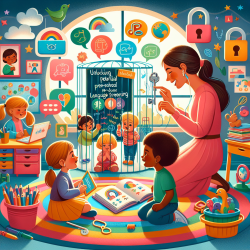The New Value of Children: A Paradigm Shift
The concept of children as a form of human capital investment is gaining traction, reshaping how we perceive their value in society. This shift is explored in the research article "Pricing the Priceless Child 2.0: Children as Human Capital Investment," which extends Viviana Zelizer’s seminal work into the new millennium. The article highlights the increasing devotion of resources and time to children's education, positioning them as economically useful future adults.
Key Findings from the Research
The research identifies four significant trends in the investment in children's human capital:
- Enrollments in Early Childhood Education: There has been a notable increase in early childhood education enrollments, reflecting a societal emphasis on early developmental investment.
- Federal Spending on Education: Both early education and K-12 programs have seen increased federal spending, highlighting government commitment to human capital development.
- Parental Spending: Parents are investing more in childcare, education, and extracurricular activities, indicating a shift towards prioritizing educational outcomes.
- Social Value Transformation: The cultural shift towards viewing children as future economic assets rather than immediate contributors to household labor or economy.
Implications for Practitioners
For practitioners in speech-language pathology and related fields, these findings underscore the importance of integrating educational and developmental strategies into therapeutic practices. Here are some actionable insights:
- Emphasize Early Intervention: Early childhood is a critical period for development. Practitioners should advocate for early screening and intervention to maximize developmental outcomes.
- Collaborate with Educators: Building partnerships with educators can enhance the support network for children, ensuring that interventions are aligned with educational goals.
- Focus on Holistic Development: While cognitive skills are essential, practitioners should also address social, emotional, and physical development to foster well-rounded growth.
Encouraging Further Research
The findings from "Pricing the Priceless Child 2.0" invite further research into how these trends affect different demographics and the long-term implications for society. Practitioners are encouraged to contribute to this growing body of knowledge by exploring the impacts of human capital investment on their specific areas of expertise.
Conclusion
Understanding the evolving value of children as human capital investments can help practitioners tailor their approaches to better support children's development. By focusing on early intervention and collaboration, we can enhance the future economic and social outcomes for children.
To read the original research paper, please follow this link: Pricing the priceless child 2.0: children as human capital investment.










